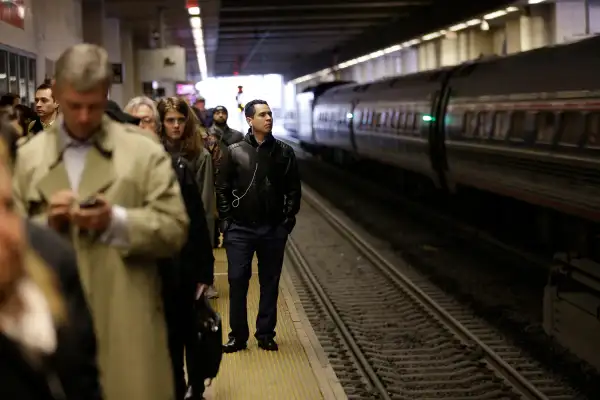What You Need to Know About Today's Disappointing Jobs Report
Money is not a client of any investment adviser featured on this page. The information provided on this page is for educational purposes only and is not intended as investment advice. Money does not offer advisory services.

The Labor Department announced that the economy produced 160,000 new jobs in April, much below market expectations, while the nation’s unemployment rate stayed at 5%. For the past three months, employers have now added an average of 200,000 new positions.
Hourly earnings, meanwhile, showed signs of life and grew 2.5% over the past 12 months, while the labor force participation rate decreased to 62.8%.
Late last month, the government reported that the economy grew at a tepid annual rate of 0.5% in the first three months of the year, raising fears that the seven-year-old economic expansion may be nearing an end.
Today's number comes while the economy is at something of a crossroads.
Crude oil prices, for instance, hung below $35 a barrel in the first few months of 2016, thanks to fears over slowing Chinese growth, and economic turmoil around the world. Over the past two months, though, investors have piled back into the commodity, pushing prices up $10 a barrel, as fears over a global recession ebb and optimism comes back in vogue.
The stock market has had similar arc so far this year. After dropping more than 5% in January, the Standard & Poor's 500 index has rebounded nearly 8% over the past three months.
Not only are private sector jobs consistently growing, but consumers are becoming more confident. Long-term unemployment is coming down, more people feel confident enough to quit their jobs and initial jobless claims recently hit a 43-year low. More people believe jobs are "plentiful" than "hard to get" - the so-called labor differential - for the first time since the end of the recession. And wage growth was practically buoyant by post-recession standards.
The bond market, though, is less sanguine. The yield on 10-year Treasury bonds have dropped from more than 2% to start the year to 1.8% now. Bond rates move opposite to fixed income prices. That means investors are buying more government debt, which are more desirable in times of stagnation.
Other metrics cast a dim lit on the economy, too. While up slightly recently, persistently low inflation has also muted growth expectations, and the economy as a whole barely budged in the first three months of 2016.
- Calculator: What is my risk tolerance?
All of the contradictory data has caused the Federal Reserve to hold off raising rates after doing so for the first time in nearly a decade last December. The FOMC, after its most recent meeting in April, acknowledged the unevenness. "[L]abor market conditions have improved further even as growth in economic activity appears to have slowed," the FOMC said in a statement. "Growth in household spending has moderated, although households' real income has risen at a solid rate and consumer sentiment remains high."
There will be another jobs report before the next Fed meeting in June. If it is as muddled as the past few have been, the Fed's life will be that much more complicated.
